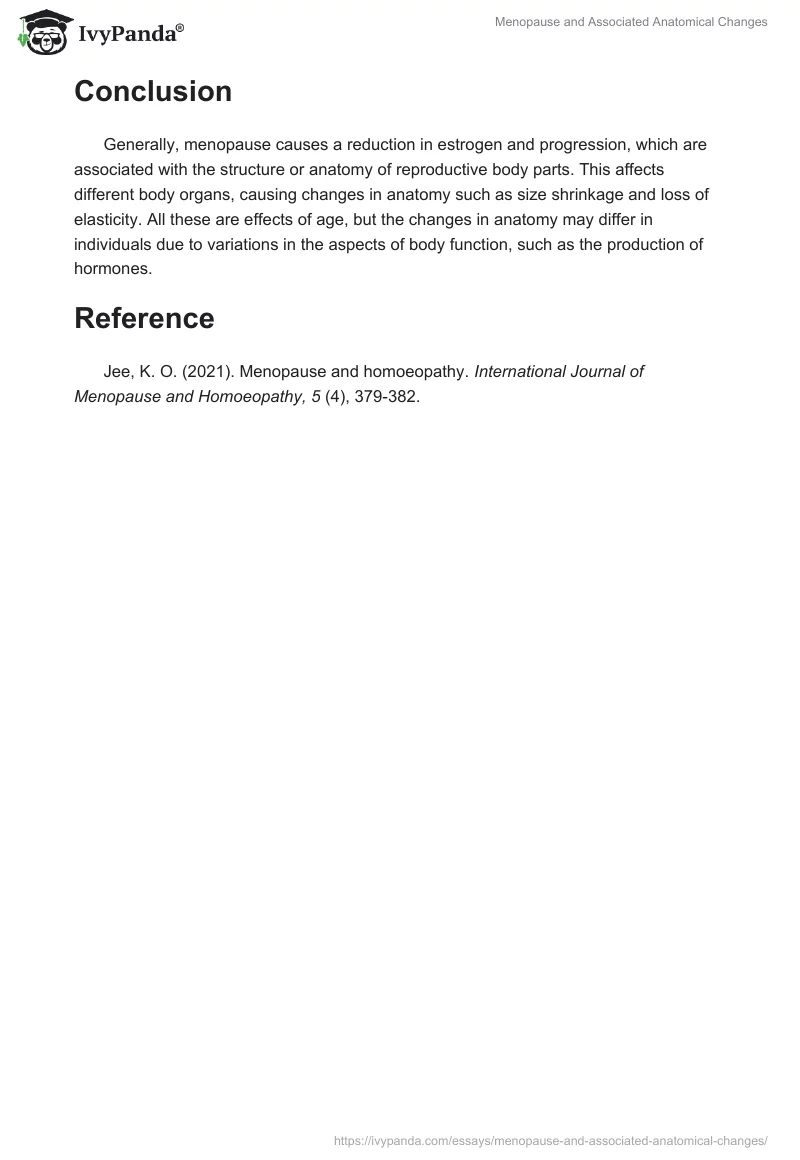Introduction
Menopause is associated with several changes, which may be anatomical, physiological, and hormonal. Menopause is characterized by a reduction in the production of certain hormones, such as estrogen and progesterone, which affect the anatomical structure of organs such as the uterus and ovaries. After menopause, fertility ends, but women can continue living healthy lives. Reproductive functions are associated with hormones indicating that changes in hormone production levels can affect the anatomy of some body parts. It is estimated that the ratio of the body to the cervix reduces to 1:1 in a majority of women (Jee, 2021). Menopause can cause a decrease in the size of the uterus and thickness of the endometrium walls, which can be attributed to low estrogen levels.
Discussion
Ovaries ease to produce eggs after menopause, making them inactive. Additionally, ovaries reduce as one ages; hence, the same trajectory is expected to continue after menopause. According to a study, ovaries shrink in size and may become wrinkled following menopause. Additionally, the cortex becomes thinner with the increased production of stromal cells, which are secretory (Jee, 2021). The fallopian tubes become atrophic as cilia and plicae disappear. The vagina losses elasticity hence becoming narrower while the vaginal epithelium thins. Some women experience atrophic features on the vulva while the labia may flatten, causing the introitus to be narrow (Jee, 2021). The bladder and urethra shrink in size and may experience dysuria or stress incontinence. Due to a loss of muscle tone, an individual may experience pelvic relations and changes in the structure of the urethra.
Conclusion
Generally, menopause causes a reduction in estrogen and progression, which are associated with the structure or anatomy of reproductive body parts. This affects different body organs, causing changes in anatomy such as size shrinkage and loss of elasticity. All these are effects of age, but the changes in anatomy may differ in individuals due to variations in the aspects of body function, such as the production of hormones.
Reference
Jee, K. O. (2021). Menopause and homoeopathy. International Journal of Menopause and Homoeopathy, 5 (4), 379-382.


